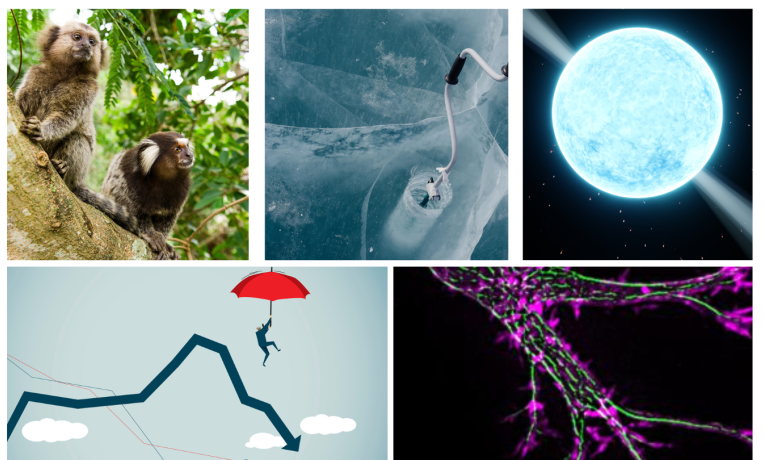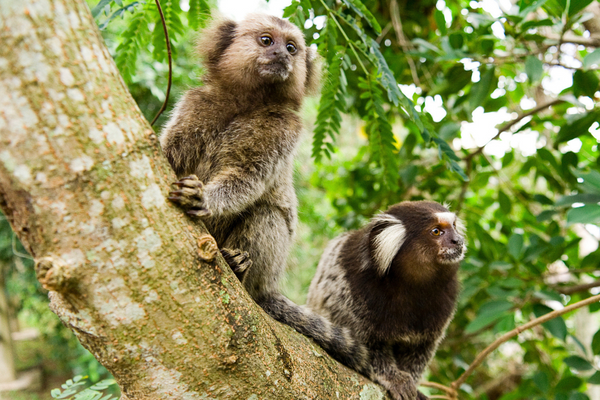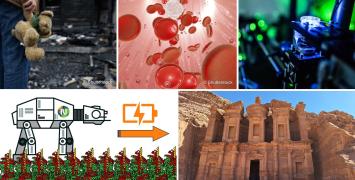ERC Synergy Grants 2022 - project highlights

How cells change shape and move around

The ability of cells to sense environmental cues and respond to them by adjusting their shape and motion is fundamental for biological processes. The basic processes of life, immune responses, cancer or regeneration – all rely on cells reshaping themselves and moving. Much is known about how cells sense and respond to their surroundings by adhering to and pulling on the objects.
However, recent studies demonstrated that cells also strongly depend on non-adhesive interactions with the environment and that they probe, sense and deform their environs by pushing into them. The goal of PushingCell project is to understand the mechanisms behind this less known phenomenon. The proposed work aims to provide new fundamental insights into biological and physical principles underlying the control of cell shape, integrity and movement.
The project brings together four research leaders and their labs with a diverse high-level and expertise. Michael Karl Sixt studies cell migration and is proficient in micro-engineering of biocompatible “obstacle courses” to study cellular phenomena and validating the findings in situ and in vivo.
Anna Akhmanova has a long history of studying how the cell cytoskeleton is formed and controlled by microtubules. Patricia Bassereau develops biomimetic systems combined with physics measurements to understand the mechanisms of membrane shaping by membrane proteins and cytoskeletal components during trafficking and protrusion formation. Pierre Sens has strong expertise in modelling biological soft active matter and active cell mechanics, with a focus on cytoskeleton-membrane interaction and motility.

- Project: Pushing from within: Control of cell shape, integrity and motility by cytoskeletal pushing forces (PushingCell)
- Researchers:
• Michael Karl Sixt, Institute of Science and Technology Austria, Austria
• Anna Akhmanova, Utrecht University, Netherlands
• Patricia Bassereau, CNRS, Institut Curie, France
• Pierre Sens CNRS, Institut Curie, France - ERC funding: EUR 9.8 million over 72 months
How does our brain integrate geometry and territory?
 The human migration out of Africa started more than 70,000 years ago. The journey of our predecessors into new lands was probably prompted by sophisticated brain mechanisms for spatial navigation, combined with a genetically-based tendency for social cooperation. Much later, with the invention of agriculture and farming, the geographic settlement of humans laid the foundations for today’s territories, a piece of land which we claim as our own and defend from others.
The human migration out of Africa started more than 70,000 years ago. The journey of our predecessors into new lands was probably prompted by sophisticated brain mechanisms for spatial navigation, combined with a genetically-based tendency for social cooperation. Much later, with the invention of agriculture and farming, the geographic settlement of humans laid the foundations for today’s territories, a piece of land which we claim as our own and defend from others.
Territorial behaviour has not subsided during human evolution, rather it still strongly shapes our perception of space partitioned into private, public or neutral (‘no man’s land’).
In this new research, the team aims to understand the neural basis of people's ability to process space geometry along the sense of space ownership, utilities and social hierarchies, leading to the perception of territoriality.
Our brain is endowed with a core system, centred in the hippocampus, rich in spatially-selective neurons that respond to space metrics such as distances, landmarks, borders. Yet when it comes to navigating our surroundings, our brain also maps space into socially meaningful territories. How does our brain integrate geometry and territory?
This newly formed research team proposes that this process is regulated by the Oxytocin system. Oxytocin, a neurohormone, known to act in the brain to increase social activity in mammals, has recently been found to modulate neural activity also in the hippocampus. But its potential role in territorial representation has not yet been studied. Here, experts in complementary fields – social behaviour, spatial navigation, neurophysiology, anatomy, and cell signalling – will study brain similarities and differences of socio-territorial strategies in five mammalian species: bats, mice, rats, marmosets, and macaques.
Their central goal is to investigate how neurons coding for space geometry (e.g. place cells, boundary cells, grid cells) respond also to territorial parameters, such as ownership, utility, and social hierarchies. Their new cross-species perspective will be the first to provide insight into the neural circuitry that governs ancestral and also contemporary mammalian territoriality behaviour.

- Project: Oxytocin-driven territorial mapping in the mammalian hippocampal formation
- Researchers:
- Valery Grinevich, Zentralinstitut Fuer Seelische Gesundheit
- Angela Sirigu, Centre National De La Recherche Scientifique Cnrs
- Dori Derdikman, Technion - Israel Institute Of Technology
- David Omer, The Hebrew University Of Jerusalem
- ERC funding: EUR 10 million over 72 months
Heavy metal for colliding neutron stars

Neutron stars are the remnants of catastrophic stellar core collapse. They have extremely strong gravitational fields, high-density matter, and extraordinary electromagnetic field strengths, making them important natural laboratories for fundamental physics. Merging neutron stars offer these extreme characteristics but in a hot collision where neutron-rich matter is expelled at high speed. This matter develops as a radioactive fireball, which is visible as a kilonova. Kilonova science is emerging as a new field in astrophysics, offering an enormous discovery space for understanding neutron stars, the origin of the elements, the physics of exotic heavy nuclei, and the phases of hot, ultra-dense, and exotic matter. These collisions can now be discovered by their powerful gravitational wave emission. The increasing sensitivity of gravitational wave detectors and the next generation of telescopes means that we expect an abundance of new kilonovae in the coming years.
HEAVYMETAL aims to take a big step in explaining these explosions of nuclear-density matter by spectroscopically dissecting kilonovae and connecting these observations to the physical properties of the neutron star merger. In doing so, they will probe the origin of the heavy elements, and delineate the nuclear and astrophysical pathways that created them – the so-called 'r-process'. The team will try to decipher the details of the observed spectra for the first time and use that information to gain unprecedented insight into the physical processes of the merger.
HEAVYMETAL brings together experts in each of the pivotal areas who, together, can push significantly beyond the current state-of-the-art. Darach Watson has been a key player in the major discoveries associated with observations and interpretation of kilonovae and has worked with rapid response follow-up data for two decades. Andreas Bauswein and his team have a long and high impact track record in connecting advanced hydrodynamical simulations of mergers and their different ejecta components to r-process nucleosynthesis, kilonova modelling, and high-density matter constraints. Padraig Dunne is a leading spectroscopist in the area of laser plasma absorption spectroscopy with expertise in heavy element spectroscopy and the manipulation of laser plasmas to maximise the presence of specific atomic ions. Stuart Sim is an expert in the modelling of radiative transfer for explosive environments, simulating detailed radiation-matter interactions and photon transport in high-velocity, metal-rich ejecta.
Moreover, there is a powerful and experienced team behind HEAVYMETAL, including experts in astronomical transient observations, nuclear physics, atomic structure calculation, and experimental spectroscopy of laser plasmas.

- Project: How Neutron Star Mergers make Heavy Elements (HEAVYMETAL)
- ERC funding: EUR 11.3 million over 72 months
- Researchers:
- Darach Watson, University of Copenhagen, Denmark
- Andreas Bauswein, GSI Helmholtzzentrum für Schwerionenforschung, Germany
- Padraig Dunne, University College Dublin, Ireland
- Stuart Sim, Queen’s University, Belfast, the UK
Pathways towards post growth deals

We face multiple intertwined crises – from climate change to geopolitical insecurity – should we rethink our understanding of economy, and move away from growth dependency? The REAL project aims to offer new pathways for what the researchers call a “post growth” era, in which achieving universal human wellbeing is achieved within planetary boundaries – and removed from dependence on economic growth.
In this quest, the researchers focus on possibilities, policies, politics and provisioning – and then implementation in practice. More specifically, they will develop equitable North-South convergence scenarios, model human well-being achievement and articulate post-growth policy packages. Among the research aims are developing democratic models of provisioning systems to ensure future populations have adequate access to necessities such as energy, food, shelter, health and social security, and identifying political and practical steps towards post-growth deals.
REAL is based on the premise that post-growth transitions may unlock a far more ecologically stable and socially prosperous future than current trajectories. By moving post-growth research from economics to broader social sciences, the research combines resource/energy modelling, political economy and socio-political analysis.
Environmental scientist Giorgos Kallis works as a professor at ICTA, Universitat Autònoma de Barcelona. Anthropologist Jason Hickel works as a professor at the same institution on ecological economics and global inequality. Julia Steinberger is a professor of ecological economics at the University of Lausanne.

- Project: A Post Growth Deal (REAL)
- ERC funding: EUR 9.9 million over 72 months
- Researchers:
- Georgios Kallis, Universidad Autónoma de Barcelona, Spain
- Jason Hickel, Universidad Autónoma de Barcelona, Spain
- Julia Steinberger, University of Lausanne, Switzerland
When was Greenland ‘green’?

Greenland ice sheet is the second largest ice body on Earth. Even though scientists have drilled deep in it and recovered oldest sediments, this huge frozen island may hide secrets. As the ice is melting faster than expected, these ice samples are becoming crucial for our understanding of the current phenomena and future developments. So far, however, researchers did not know how to crack these problems.
Now Green2Ice aims to develop and apply cutting-edge dating methods to this unique sample collection. Doing so will reconstruct the ice sheet's age and stability. It will also help us understand the implications of ice-free conditions in Greenland on the sea levels and microbial populations below the ice that present a potent contribution to greenhouse gases.
First, the team is planning to retrieve new ice samples to document the ice sheet's collapse. Then, they will develop new dating approaches to reconstruct the ice sheet's history. They hope to gain insights into the climatic conditions during the ice-free intervals and improve our understanding of the environment beneath the ice sheet. Finally, they will calculate the temperature conditions needed for Greenland to be ice-free and predict the future sea level rise.
This unique project brings together researchers specialised in various complementary fields. Dorthe Dahl-Jensen is bringing her expertise in geophysics and modelling, François Fripiat - in biogeochemistry on basal ice and frozen sediments, Pierre-Henri Blard is contributing his knowledge in geochemistry and geochronology, Anders Svensson – in ice core measurements and stratigraphy.

- Project: When was Greenland ‘green’? – Perspectives from basal ice and sediments from ice cores. (Green2Ice)
- ERC funding: EUR 13.9 million over 72 months
- Researchers:
- Pierre-Henri Blard, CRPG, CNRS, Nancy, France
- François Fripiat, Université Libre de Bruxelles, Belgium
- Anders Svensson, Niels Bohr Institute, University of Copenhagen, Denmark
- Dorthe Dahl-Jensen, Niels Bohr Institute, University of Copenhagen, Denmark





